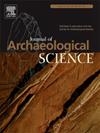考古学中的统计模型:一些最近的趋势和未来的观点
IF 2.6
1区 地球科学
Q1 ANTHROPOLOGY
引用次数: 0
摘要
本文回顾了近十年来统计模型在考古学中的应用,重点介绍了多层模型、缺失数据和测量误差的统计处理以及基于模拟的生成推理。这些技术旨在1)解释考古记录的嵌套性和层次性,2)正式整合不同形式的数据不确定性,以及3)在形式理论和观测数据之间提供更直接的推断联系。考古学使用这些方法的程度是可变的,但可以认为,目前没有一种方法被认为是定量考古学中标准分析工具包的一部分。本文的目的是提高对这些技术存在的认识,并强调忽视这些统计方法可以解决的潜在问题的后果。本文章由计算机程序翻译,如有差异,请以英文原文为准。
Statistical modelling in archaeology: some recent trends and future perspectives
This paper reviews the application of statistical models in archaeology in the last decade, focusing in particular on multilevel models, statistical treatment of missing data and measurement error, and simulation-based generative inference. These techniques are designed to 1) account for the nested and hierarchical nature of the archaeological record, 2) formally integrate different forms of data uncertainties, and 3) provide a more direct inferential link between formal theory and observational data. The extent to which archaeology has engaged with these methods is variable, but it can be argued that none are currently regarded as part of the standard analytical toolkit in quantitative archaeology. The objective of this paper is to promote awareness of the existence of these techniques and highlight the consequences of ignoring the underlying problems that these statistical methods can address.
求助全文
通过发布文献求助,成功后即可免费获取论文全文。
去求助
来源期刊

Journal of Archaeological Science
地学-地球科学综合
CiteScore
6.10
自引率
7.10%
发文量
112
审稿时长
49 days
期刊介绍:
The Journal of Archaeological Science is aimed at archaeologists and scientists with particular interests in advancing the development and application of scientific techniques and methodologies to all areas of archaeology. This established monthly journal publishes focus articles, original research papers and major review articles, of wide archaeological significance. The journal provides an international forum for archaeologists and scientists from widely different scientific backgrounds who share a common interest in developing and applying scientific methods to inform major debates through improving the quality and reliability of scientific information derived from archaeological research.
 求助内容:
求助内容: 应助结果提醒方式:
应助结果提醒方式:


